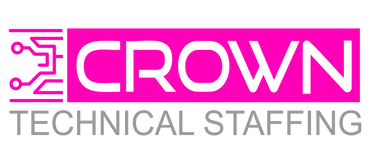Last week, I spoke with a CHRO and COO about the importance of understanding the phase an organization is in when hiring key strategic executive roles. Imagine a startup, just out of the gate, with ideas and energy to last for days, but craving direction. Or picture a company hitting its growth spurt, expanding faster than ever, hungry for structure to manage its new size. Maybe there’s a manufacturer in the midst of a major makeover, shifting its sails to catch a different wind or one that’s hit a rough patch, desperately needing a steady hand to guide it through. In each of these scenarios, the key to success isn’t just about having leaders; it’s about having the right leaders.
Understanding exactly where your company stands – its unique phase – is like finding a map that shows you which kind of captain you need at the helm. That captain, the right executive, can steer your company not just to survive but to thrive, perfectly in tune with the strategy you’ve charted. Here’s why the organizational phase matters significantly in the selection of executive leaders:
Alignment with Organizational Needs:
- In the startup phase, agility, innovation, and risk-taking are essential. Therefore, executives who are dynamic and agile, with a high tolerance for ambiguity, thrive in such environments.
- During periods of rapid growth, scaling becomes a priority. Leaders who excel in building scalable processes, managing expansion, and fostering a culture of adaptability are invaluable.
- Mature organizations require executives with a keen focus on optimization, efficiency, and long-term sustainability. Experience in navigating complex structures and driving operational excellence is vital.
- Amid transformation or turnaround efforts, leaders capable of inspiring change, driving cultural shifts, and making tough decisions are crucial.
Leadership Styles:
- Each organizational phase often has its unique culture and leadership requirements. Executives must align with these cultural nuances and possess leadership styles that complement the organization’s current needs.
- Startups thrive on passion, collaboration, and risk-taking, making visionary leaders ideal for fostering innovation and inspiring teams.
- Growing companies demand leaders who can balance innovation with structure, fostering a culture of accountability and execution while maintaining agility.
- Mature organizations seek steady and strategic leaders who can navigate complexities, drive efficiency, and foster a culture of continuous improvement.
- Organizations in transformation or crisis need bold and decisive leaders capable of rallying teams, implementing change, and instilling confidence in key stakeholders.
Strategic Vision and Adaptability:
- The ability to foresee industry trends, anticipate market shifts, and adapt strategies accordingly is essential for executive leaders across all organizational phases.
- However, the emphasis on certain aspects of strategic vision may vary based on the organization’s phase. For instance, startups prioritize disruptive innovation and rapid market penetration, while mature companies focus on sustaining competitive advantages and diversifying revenue streams.
- Executives must demonstrate the agility to pivot strategies as the organization evolves, ensuring alignment with market dynamics, customer needs, and internal capabilities.
Risk Appetite and Tolerance:
- Organizational phases inherently entail varying levels of risk and uncertainty. Executives must possess the appropriate risk appetite and tolerance to navigate challenges effectively.
- Startups and high-growth companies often embrace calculated risks to drive innovation and gain market share, requiring leaders who are comfortable operating in ambiguous environments.
- Mature organizations prioritize risk management and stability, necessitating leaders capable of mitigating risks while capitalizing on opportunities for controlled growth.
- Organizations in transformation or turnaround phases confront heightened risks and uncertainties, demanding leaders with the courage to make bold decisions and navigate ambiguity with resilience.
The phase of an organization profoundly influences its strategic priorities, culture, and operational requirements. When selecting executive talent for key roles, it is imperative to consider the organization’s phase and align leadership capabilities accordingly.
Here are three ways that we can help…
CTS carries out deep talent mapping, nationwide, to ensure our shortlists contain only the very best leaders for your Engineering and Manufacturing teams.
1. We help to attract and retain the best candidates, specifically for your team, in addition to the frontline leaders that you’ll need for growth and stability.
2. Reduce the cost of acquiring and training new hires by supporting and enhancing the efforts of your onboarding team for the first 90 days.
3. Provide a zero-risk and no-cost assessment of your hiring strategies with a 15-minute consultation.


